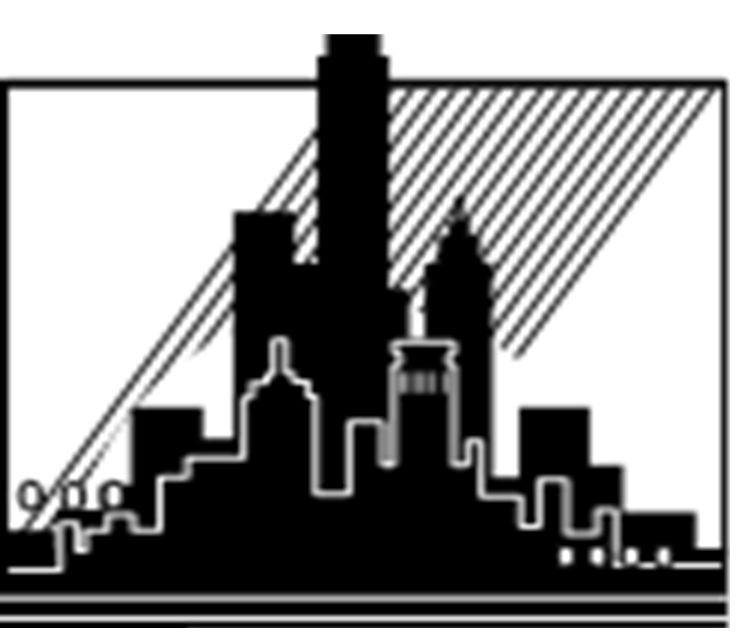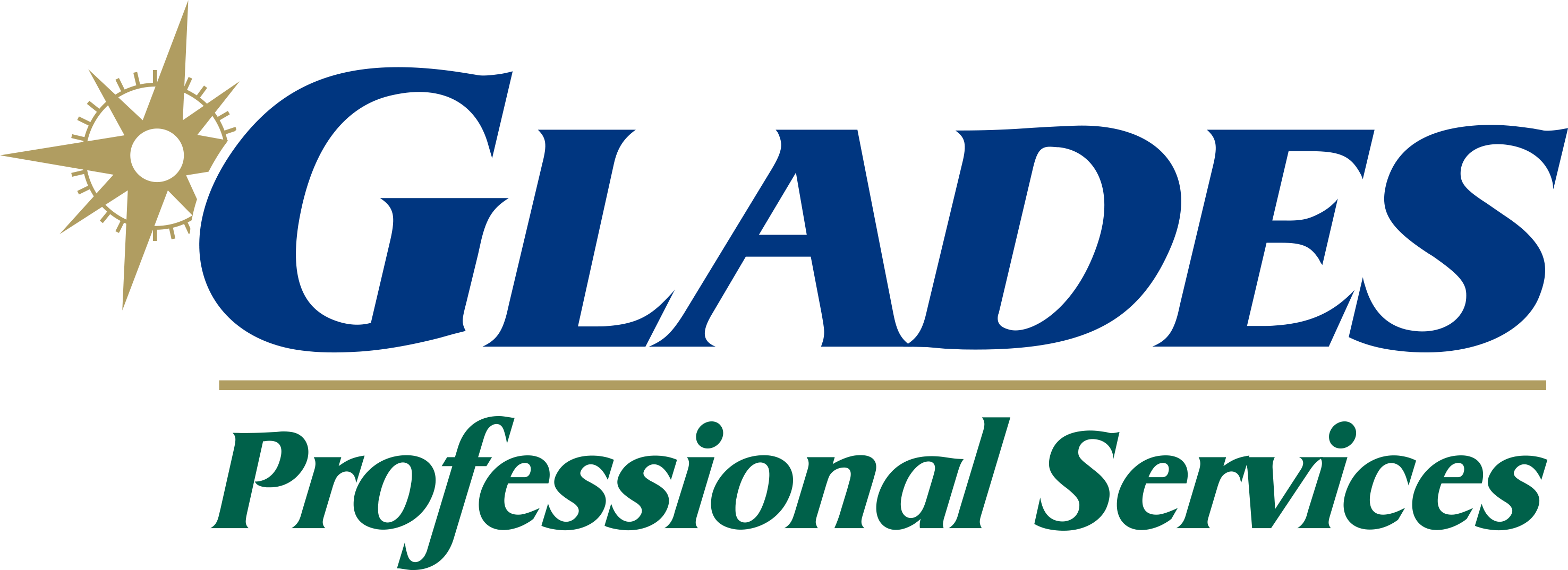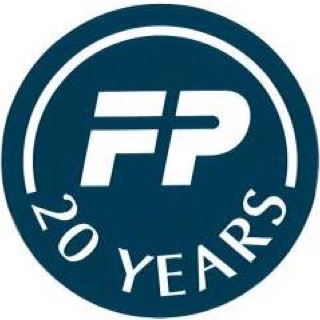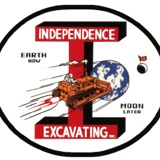Information
-
This is a detailed jobsite conditions safety compliance audit, including detailed OSHA specific requirements. Mark any observed risks or hazardous conditions on the jobsite.
TAKE AS MANY PICTURES AS POSSIBLE OF ANY AND ALL SAFETY CONCERNS. -
Project Name/Location
-
Lead Mechanic or Subcontractor Name
-
General Contractor
-
Audit conducted on
-
Location of work site
General
-
Select the temperature range for today (only select one).
- < 32° F
- 33-55° F
- 56-70° F
- 71-90° F
- 91-100° F
- > 100° F
-
Select site weather conditions at time of this inspection (select all that apply).
- Sunny
- Cloudy
- Rainy
- Windy >10 MPH
- OTHER
-
Describe weather conditions on site today
-
Select the ground conditions at this job site (only select one)
-
Describe ground condition on site today.
-
Current activities being undertaken on site (select all that apply)
- General
- Abatement
- Demolition
- Formwork
- Reinforce Steel
- Steel Erection
- Mechanical
- Electrical
- Plumbing
- Roofing
- Drywall
- Painting
- Sitework/Excavation
- Stair Installation
- Cleanup
- OTHER
-
Describe activities being undertaken on site
Site Safety Inspection
General Site Safety and Safe Work Practices
-
Were the general site and safe work practices inspected in this audit?
-
Are safe entry and exits points clearly marked? 1926.200
-
Is site perimeter fenced off appropriately to protect the public with proper signage posted? 1926.200
-
Is a Competent Person in-charge of the work site with at least an OSHA 30 card? 29 U.S.C. § 654, 5(a)(1)
-
Materials properly stacked and staged to avoid damage, falling or collapse? 1926.250(a)(1)
-
Materials properly stored to avoid blocking exits and proper aisle created for material access? 1926.250(a)(3)
-
Are materials not stored within 6' of any hoistway or inside floor openings, nor within 10' of an exterior wall? 1926.250(b)(1)
-
Are proper lifting techniques and equipment being used to avoid strains/sprains? 29 U.S.C. § 654, 5(a)(1)
-
Are duct jacks inspected on a daily basis, with an inspection record tag attached to the equipment? 1910.244(a)
Paperwork
-
Were site paperwork inspected in this audit?
-
Is a current copy of the Safety Manual and/or Site Specific Work Plan on site? 29 U.S.C. § 654, 5(a)(1)
-
Are weekly toolbox safety talk meetings being conducted, documented and turned-in? 1926.21(b) (2)
-
Was a daily work plan or job hazard/safety analysis (JHA/JSA) completed for today's tasks? (As required)
-
Did the JHA/JSA match the hazard(s) present and the task(s) being performed?
First Aid, Fire Prevention and Emergency Procedures
-
Were first aid kits and emergency action plans inspected in this audit?
-
Is there a WRITTEN emergency action plan and has it been discussed with all employees? 1926.35(a)
-
Extinguishers in place on every work level, clearly marked and easily accessible? 1926.150(a)(3)
-
Extinguishers serviced within the last year? (check punch mark on tabs) 1926.150(a)(4)
-
Is the first aid kit in its designated location and readily accessible to all employees? 1926.50(d)(1)
-
Is a first aid kit provided, properly stocked and inventoried WEEKLY? 1926.50(d)(2)
-
Does at least one person onsite have a current CPR/1st Aid certification? 1926.50(c)
Personal Protective Equipment (PPE)
-
Was Personal Protective Equipment (PPE) inspected in this audit?
-
Is head protection worn correctly, at all times? 1926.100
-
Is appropriate eye and face protection being worn correctly, at all times? 1926.102(a)(1)
-
Are proper hand and arm protections being worn for the task? 1926.95(a)
-
Are safety vests or safety shirts being worn correctly, at all times? 1926.10(a)
-
Is proper footwear being worn and in good condition? 1926.96<br>
-
Is hearing protection worn in designated areas or as needed? 1926.101(a)
-
Is additional PPE used when/where required?
-
List the additional PPE being used:
Hand and Power Tools
-
Were hand and power tools inspected in this audit?
-
Are all hand and power tools in good condition and inspected before each use? 1926.300(a)
-
Are defective hand and power tools tagged and removed from service? 1926.301(a)
-
Are power cords in good condition and laid-out to avoid contact with water, pinch points, moving equipment, etc? 1910.334(a)(1)
-
Are all tool guards in place and operable? 1926.300(b)(1)
-
Are all electrically powered tools double insulated or have a ground plug? 1926.302(a)(1)
-
Are tools stored correctly, safely and properly secured when not in use? 29 U.S.C. § 654, 5(a)(1)
-
Are employees using the proper tool for the task they are performing? 29 U.S.C. § 654, 5(a)(1)
-
Are employees using two hand on tools that are designed to do so? 29 U.S.C. § 654, 5(a)(1)
-
Are dust collectors and exhausts provided on tools that are used in silica-disturbing procedures (drilling, jack-hammering, etc...)? 1926.1153(c)(2)(i)
Powder Actuated Tools
-
Are powder actuated tools in operation at this job and were they inspected in this audit?
-
Does operator have proper training and certification for the tool being used? 1926.302(e)(1)
-
Are all safety guards in place while operating the tool? 1926.302(e)(3)
-
Are proper eye, face and ear protection being used during operation? 1926.302(e)(4)
-
Are proper warning signs posted and/or is the operator using a warning call ("Fire In The Hole") during operation? 29 U.S.C. § 654, 5(a)(1)
Ladders & Stairways
-
Were ladders or stairs in operation at this job and were they inspected in this audit?
-
Items Inspected
- Portable Ladders
- Job-Built Ladders
- Extension Ladders
- Stairways
Portable Ladders
-
Are the areas around the tops and bottoms of ladders kept clean and clear? 1926.1053(b)(9)
-
Are employees using 3-points of contact, and not carrying anything, while climbing up or down the ladder? 1926.1053(b)(22)
-
Is the ladder the correct height for the task? 29 U.S.C. § 654, 5(a)(1)
-
Are users inspecting ladders before each use (ask and/or inspect ladder)? 1926.1053(b)(15)
-
Are all ladders Industrial strength? (Class 1, 1A & 1AA - ONLY) 1926.1053(b)(3)
-
Are ladders being used according to manufacturers instructions? 1926.1053(b)(4)
-
Are the ladders setup properly with locking spreader bars locked into place? 1926.1053(a)(8)
-
Do all ladders have proper, legible labels? 1926.1053
-
Are rungs free of mud, grease, oil or other substances which could affect safe climbing? 1926.1053(b)(2)
-
Are defective ladders labeled and removed from the work area? 1926.1053(b)(16)
-
Where work is performed within 6' of a fall hazard (open edge, guardrail, etc.), is a PFAS being worn and properly anchored? 1926.501(b)(15)
Extension Ladders
-
Are the areas around the tops and bottoms of ladders kept clean and clear? 1926.1053(b)(9)
-
Are ropes, pulleys and treads in a good state of repair? 1926.1053(b)(16)
-
Is the ladder setup at a 4 to 1 ratio? 1926.1053(b)(5)(i)
-
Is the ladder tied-off, staked down or stabilized in some other manner? 1926.1053(b)(8)
-
Does the ladder extend at least 36" above the landing? 1926.1053(b)(1)
-
Are rungs free of mud, grease, oil or other substances which could affect safe climbing? 1926.1053(b)(2)
-
Are defective ladders labeled and removed from the work area? 1926.1053(b)(16)
Job-Built Ladders
-
Are the areas around the tops and bottoms of ladders kept clean and clear? 1926.1053(b)(9)
-
Is the ladder built to ANSI standards, including minimum 2x6 side rails, 2x4 rungs, and cleats INSERTED between each rung? ANSI A14.4-1979
-
Is the ladder properly secured and stabilized? 1926.1053(b)(8)
-
Is ladder setup at a 4 to 1 ratio? 1926.1053(b)(5)(i)
-
Do the side rails extend at least 36" above the landing? 1926.1053(b)(1)
-
Are rungs free of mud, grease, oil or other substances that could affect safe climbing? 1926.1053(b)(2)
-
Are defective ladders labeled and/or disabled from use? 1926.1053(b)(17)
Stairways
-
Do all stairwells have at least 5 ftc of lighting? 1926.56
-
Is at least one well braced handrail properly installed with no open edges? 1926.1052(c)(1)
-
Are metal stair casings fully filled with something solid (cement, wood, etc.)? 1926.1052(b)
-
Are risers free of mud, grease, oil, trash, tools, materials or other substances that could affect safe climbing? 1926.1052(a)(7)
-
Are open edges of stairs protected by proper guardrails? 1926.1052(c)(12)
-
Are inadequate or incomplete stairways labeled and secured to prevent usage? 29 U.S.C. § 654, 5(a)(1)
-
Where work is performed on a ladder or raised platform while ON the stairs, is a PFAS being worn and properly anchored? 1926.501(b)(15)
Housekeeping & Sanitation
-
Site housekeeping and sanitation inspected in this audit?
-
If used, are the portable containers used to dispense drinking water in good condition, clean and clearly marked for DRINKING ONLY? 1926.51(a)(3)
-
Trash cans/bags available near the water dispenser for trash and cups? 1926.51(a)(5)
-
Are boards free of nails or have nails been bent/placed as to not be a safety hazard? 1926.25(a)
-
Are all impalement hazards properly marked and/or protected to limit their hazard? 29 U.S.C. § 654, 5(a)1
-
Are floors and walk areas clear of trash, tools and materials? 1926.25(a)
-
Is site generally orderly, with waste materials disposed of correctly? 1926.25(a)
-
Are there sufficient port-a-johns available on this job (1 unit for every 10 employees working 40 hours) and are they maintained in a sanitary manner? 1926.51(c)(1)
-
Are asbestos hazards properly marked and have we viewed the Asbestos Abatement certificate to identify the EXACT location of all asbestos containing materials? 1926.1101(f)(2)
-
Are controls, tools and procedures in place to ensure respirable silica remains below action level (25 μg/m3) and being used throughout the job? 1926.1153(a)
Equipment Operations
-
Are equipment operations to be inspected in this audit?
-
Are all equipment operators licensed to operate their respective equipment? 1926.454(a) & 1910.178(i)
-
Do all operators have valid training/license cards in their possession at the time of usage? 1926.453(b)(2)(ii) & 1910.178(i)
-
Are daily pre-start inspections and function tests being conducted and documented? 1926.453(b)(2)(i) & 1910.178(p)(1)
-
Are all guardrail systems (if required) in place and functional (to include access ladders, gates, chains, etc.)? ANSI A92.2-1969
-
If so equipped, are seat belts being worn during operation? 1926.602(a)(2)
-
Is equipment being operated in a safe and proper manner for the conditions on the job site? 1910.178(m)
-
If required, is proper fall restraint being used during operation? 1926.453(b)(2)(v)
-
Is all out-of-service equipment properly tagged and removed from work areas to prevent improper usage? 1910.178(p)(1) & 1926.453(b)(2)(i)
Fall Protection and Roof Work Safety
-
Fall protection or roof work inspected in this audit?
-
Items Inspected
- Fall Protection
- Roof Work
Fall Protection
-
Are fall preventive measures in place and used where required? 1926.501(b)
-
Is all fall protection equipment visually inspected prior to each use (ask employee and/or inspect equipment)? 1926.502(d)(21)
-
Is all work above six feet (6') and within fifteen feet (15') of an edge/opening being done safely with proper PFAS? (Venture policy)
-
Are all floor openings fully barricaded or protected with a secured cover and labelled "Hole/Hoyo"? 1926.502(b)(11)/1926.502(i)
-
Is all material, tools and work being performed at least 6' from the fall hazard? 1926.250(b)(1)
-
For work where PFAS can not be used and passive fall protection is not installed, do we have a written work plan with a safety monitor assigned? 1926.502(h)
-
Is area near the fall hazard free of unnecessary trash, tools and materials? 1926.502(d)(16)(iii)
Roof Work
-
Is there proper, safe roof access and are our employees using this access?
-
Is the roof free of unnecessary trash, tools and materials?
-
Are all floor openings fully barricaded or protected with a secured cover and labelled "Hole/Hoyo"? 1926.502(b)(11)/1926.502(i)
-
When cutting roof holes, is proper PFAS being used and catch-platform used below? 1926.501(b)(4)(i)
-
Are roof edges protected by guardrails, parapet walls or cabling or is there a warning line system at least 15' from the edge? 1926.502(a)(2)
-
Do guardrails, parapet walls or cable rails provide at least 39" of fall protection? 1926.502(b)(1)
-
Is all material, tools and work being performed at least 6' from the fall hazard? 1926.250(b)(1)
-
Where PFAS can not be used and guardrails are not installed, do we have a written work plan with a safety monitor assigned? 1926.502(h)
Scaffolding
-
Scaffolds to be inspected in this audit?
-
Are scaffolds designed by qualified personnel? 1926.451(a)(6)
-
Are all scaffolds inspected by a Competent Person daily, before accessing or using that scaffold? 1926.451(f)(3)
-
Are scaffolds barricaded to prevent tools and material from falling? 1926.451(h)(2)(i)
-
Are scaffolds accessible by a designed ladder or scaffold staircase? 1926.451(e)(1)
-
Is each scaffold deck fully planked and are planks properly secured to prevent movement? 1926.451(b)(1)(i)
-
Is scaffold adequately secured to building, when required, and cross braced? 1926.451(c)(1)
-
Are guard rails installed on all scaffolds above 10 feet? 1926.451(g)(4)
-
Are scaffold footings stable, secure and free of unstable propping objects (barrels, boxes, loose brick or concrete blocks etc)? 1926.451(c)(2)(ii)
-
Are scaffold decks maintained generally clean and items secured and away from the edge? 1926.451(h)(1)
-
If using a baker's scaffold, are wheels locked when being used for work purposes? 1926.452(w)(2)
-
If using a baker's scaffold that is being moved, are all occupants made aware of the movement? 1926.452(w)(10)
Electrical Safety
-
Electrical safety to be inspected this audit?
-
Is there sufficient general lighting available to meet the minimum 3 ftc lighting requirement? 1926.56
-
Is there sufficient lighting on stairs and marked access/egress points to meet the minimum 5 ftc lighting requirement? 1926.56
-
Are all temporary lights properly guarded? 1926.405(a)(2)(ii)(e)
-
Are all temporary lights at least 8 feet off the ground, or hung as high as possible? 1926.403(i)(2)(i)(d)
-
There are no broken plugs, sockets or switches - temp in good condition? 1926.403(b)(1)
-
GFCI available for use with all electrically powered construction tools? 1926.404(b)(1)(ii)
-
All electrical components (j-boxes, panel cans, etc.) properly concealed with no open holes or exposed energized components? 1926.403(b)(1)
-
Are proper volt and warning signs displayed on energized electrical panels? 1926.403(g)
Lockout/Tagout (LOTO)
-
Is LOTO being used on this job and inspected this audit?
-
Are tags properly marked with names, dates, phone numbers and company information? 1926.417(a)
-
Are proper lockout devices sufficient to prevent accidental contact with any energized components? 1926.416(a)(1)
-
Are the Venture LOTO procedures being followed properly and completely? (Venture policy)
-
Are employees properly protected from ALL energy sources (not just electrical)? 29 U.S.C. § 654, 5(a)(1)
HAZCOM
-
HAZCOM safety to be inspected this audit?
-
Is there a copy of the Venture HAZCOM program available on site? 1910.1200(h)(2)(iii)
-
Are Safety Data Sheets (SDS) available for all chemicals? 1910.1200(g)(1)
-
Have risk assessments been completed and discussed with employees using non-routine hazardous substances? 1910.1200(e)(1)(ii)
-
Are all containers labelled correctly? 1910.1200(f)(1)
-
Is adequate ventilation provided, as required or necessary? 1926.57(a)
Confined Spaces
-
Confined spaces safety to be inspected this audit?
-
Was air quality testing completed and documented for each Confined Space on the job? 1926.1203(e)(2)(iii)
-
Do we have a site specific plan for any Permit Required Confined Space entries? 1926.1203(h)
-
Is a confined space emergency plan in place? 1926.1204(i)
-
Have all workers completed confined space safety training in entry, attendant and supervisor responsibilities? 1926.1207
Welding, Cutting, Brazing and Burning
-
Is welding, cutting, brazing or burning being conducted and inspect this audit?
-
Has a "Hot Work Permit" been completed (either Venture's or the GC's) and is it readily available at the task location?
-
Is a fire extinguisher within 25' of these activities and is the tag current? 1926.352(d)
-
Are all compressed gas cylinders secured and stored in an up-right position? (With caps when not in use) 1926.350(a)(7)
-
Are appropriate PPE and screens being used for the task at hand? 1926.352(b)
-
Are STRIKERS the ONLY means for ignition purposes? 1926.350(g)(3)
-
Is a Fire Watch assigned and are they present on the job? 1926.352(e)
Cranes & Lifts
-
Is a crane or helicopter lift being conducted and inspected this audit?
-
Was a pre-lift safety meeting conducted with the GC, the Superintendent and the operator, before operation? 1926.551(b) &
-
Have adequate communications been established for this crane lift? 1926.1400(f)
-
Are all annual certifications and daily inspections being conducted and are they up-to-date, respectively? 1926.1412(a)
-
Is the crane operator properly licensed for this unit? 1926.1427(a)
-
Is the swing radius or control zone properly protected? 1926.1424(a)
-
Are tag lines being used to control the load? (When required) 1926.1408
-
Are wind and weather conditions safe for operation? 1910.180(c)(1)(iv) &1926.1417(n)
-
Is there a qualified signal person assigned and assisting with the operation? 1926.1428(a)
-
Is all rigging equipment in acceptable condition with proper labels intact? 1926.251(a)
-
Are the ground and roof conditions suitable for the weight crane, helicopter and/or units to be lifted? 1926.1402(a)
-
Has a Critical Lift Plan been written, implemented and discussed with the whole crew, for all loads exceeding 75% of the crane lifting capacity? (Venture policy)
General Comments
-
Any further comments or recommendations arising from this inspection?
-
Add any additional relevant photos
-
Have all required corrective actions been added as Actions to this inspection?
-
Please add any corrective actions to the appropriate questions above before completing this report
Sign Off
-
Name & Signature of Inspector
-
Name & Signature of Lead Mechanic or Subcontractor Lead












